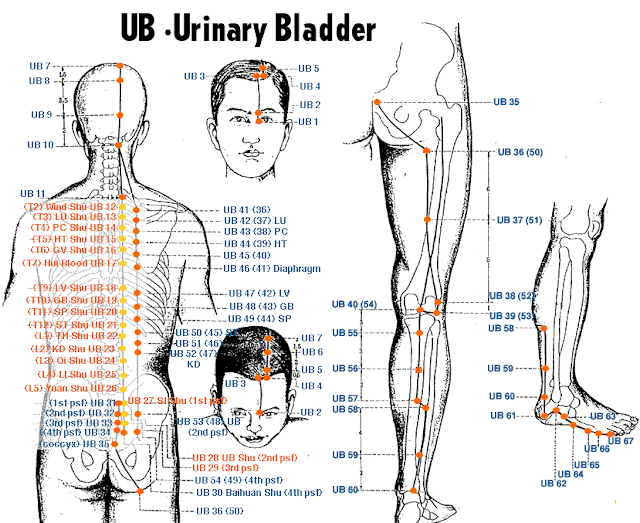From sole of foot to collarbone/wishbone:
KD1 涌泉 (Yongquan) Gushing Spring (>sore throat, insomnia, epilepsy, memory loss, anxiety/panic)
KD2 然谷 (Rangu) Blazing Valley
KD3 太谿 (Taixi) Great RavineKD4 大鐘 (Dazhong) Large Goblet/Bell
KD5 水泉 (Shuiquan) Water Spring
KD6 照海 (Zhaohai) Shining Sea
KD7 復溜 (Fuliu) Recover Flow (>Diarrhea, abdominal distention, hemorrhoids, constipation)
KD8 交信 ( Jiaoxin) Intersection Reach
KD9 築賓 (Zhubin) Guest House (Strong spirit disorders - anger, cursing, mania)
KD10 陰谷 (Yingu) Yin Valley
KD11 橫骨 (Henggu) Pubic Bone
KD12 大赫 (Dahe) Great Manifestation
KD13 氣穴 (Qixue) Qi Hole
KD14 四滿 (Siman) Fourfold Fullness
KD15 中注 (Zhongzhu) Central Flow
KD16 肓俞 (Huangshu) Huang Shu
KD17 商曲 (Shangqu) Shang Bend
KD18 石關 (Shiguan) Stone Pass
KD19 陰都 (Yin Du) Yin Metropolis
KD20 腹通谷 (Tonggu) Open Valley
KD21 幽門 (Youmen) Dark Gate
KD22 步廊 (Bulang) Corridor Walk
KD23 神封 (Shenfeng) Spirit Seal
KD24 靈墟 (Lingxu) Spirit Ruins
KD25 神藏 (Shencang) Spirit Storehouse
KD26 彧中 (Yuzhong) Lively Center
KD27 俞府 (Shufu) Shu Mansion







